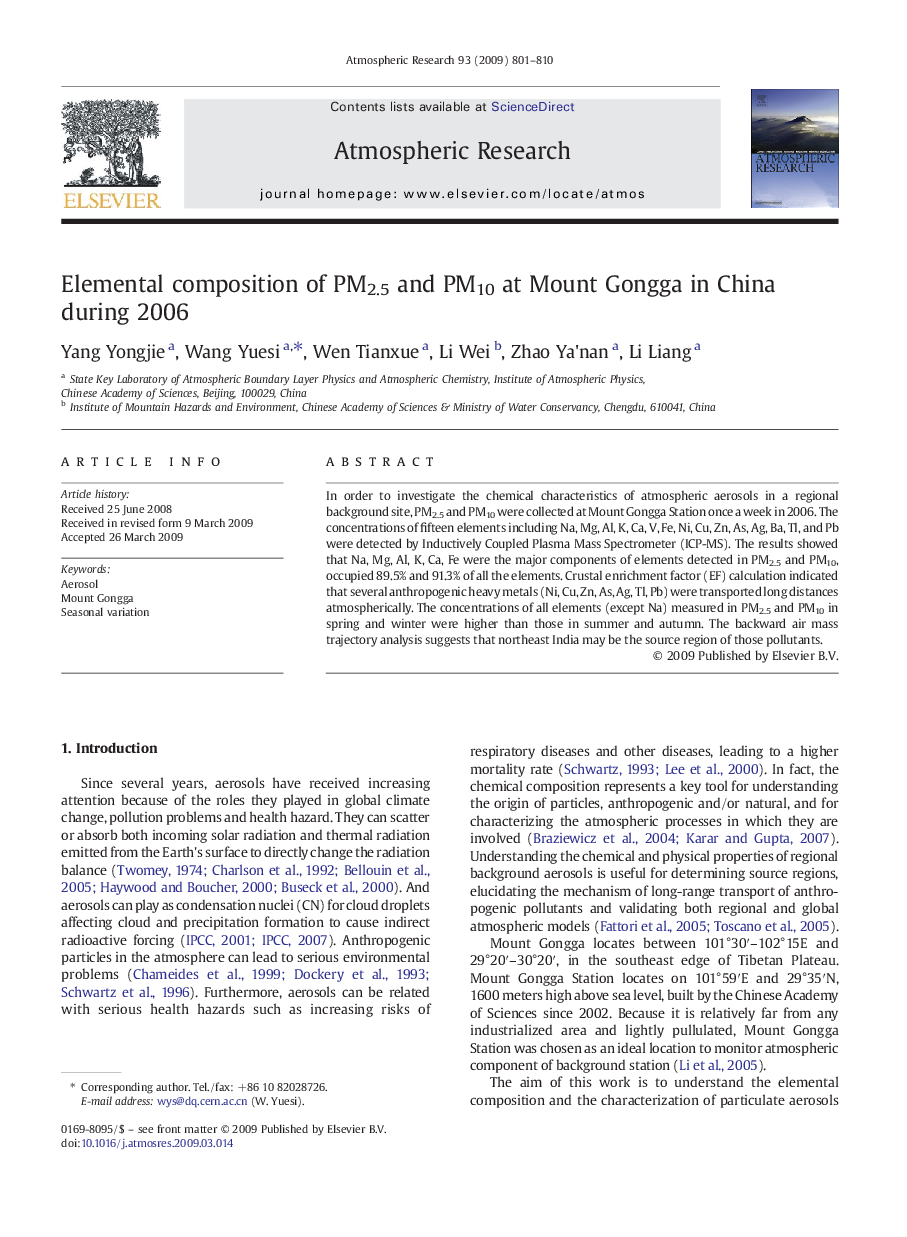| Article ID | Journal | Published Year | Pages | File Type |
|---|---|---|---|---|
| 4450955 | Atmospheric Research | 2009 | 10 Pages |
Abstract
In order to investigate the chemical characteristics of atmospheric aerosols in a regional background site, PM2.5 and PM10 were collected at Mount Gongga Station once a week in 2006. The concentrations of fifteen elements including Na, Mg, Al, K, Ca, V, Fe, Ni, Cu, Zn, As, Ag, Ba, Tl, and Pb were detected by Inductively Coupled Plasma Mass Spectrometer (ICP-MS). The results showed that Na, Mg, Al, K, Ca, Fe were the major components of elements detected in PM2.5 and PM10, occupied 89.5% and 91.3% of all the elements. Crustal enrichment factor (EF) calculation indicated that several anthropogenic heavy metals (Ni, Cu, Zn, As, Ag, Tl, Pb) were transported long distances atmospherically. The concentrations of all elements (except Na) measured in PM2.5 and PM10 in spring and winter were higher than those in summer and autumn. The backward air mass trajectory analysis suggests that northeast India may be the source region of those pollutants.
Keywords
Related Topics
Physical Sciences and Engineering
Earth and Planetary Sciences
Atmospheric Science
Authors
Yang Yongjie, Wang Yuesi, Wen Tianxue, Li Wei, Zhao Ya'nan, Li Liang,
